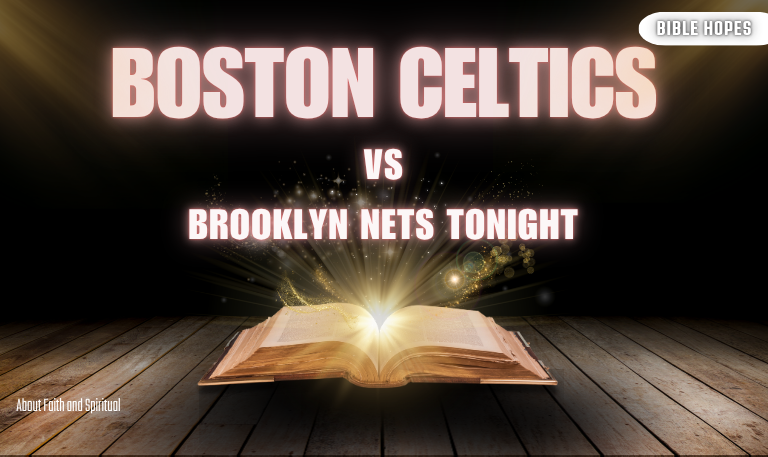Choosing the right Bible translation is essential for deepening your faith, understanding scripture accurately, and enriching your daily devotion. Two popular and widely used English Bible versions are the New Living Translation (NLT) and the New King James Version (NKJV). While both aim to faithfully convey the Bible’s message, their translation philosophies, language style, and textual sources differ significantly.
This article offers a detailed, authoritative comparison of the NLT vs NKJV Bible—covering history, translation methods, readability, theological impact, and practical usage—helping you decide which Bible version aligns best with your spiritual journey.
What Are the NLT and NKJV Bibles?
The New Living Translation (NLT) is a modern English Bible translation first published in 1996, designed to be easily understood by contemporary readers while maintaining the original message of the Scriptures. It emphasizes clarity and accessibility, making it a favorite for personal devotions, family reading, and new believers.
The New King James Version (NKJV), published in 1982, is a modern update to the historic King James Version (KJV). It preserves much of the poetic cadence and traditional style of the KJV but uses modern grammar and vocabulary. The NKJV appeals to readers who appreciate a more formal, literal translation style.
Read Also: Different Religions in the World
Origins and History of NLT and NKJV
NLT Origins
The NLT evolved from the Living Bible, a paraphrase by Kenneth Taylor.
Developed by a team of 90 biblical scholars from various denominations.
Published by Tyndale House Publishers, it was crafted to communicate biblical truths clearly in today’s language.
The translation team used the best available Hebrew and Greek manuscripts.
NKJV Origins
The NKJV was created by a committee of over 130 scholars and pastors.
Published by Thomas Nelson, it was intended to preserve the beauty of the KJV while improving readability.
It relied on the Textus Receptus manuscript tradition (like the original KJV), with careful updates to archaic words.
Translation Philosophy: Dynamic vs Formal Equivalence
One of the most important distinctions between NLT and NKJV lies in their translation approach:
NLT uses Dynamic Equivalence (Thought-for-Thought): It prioritizes conveying the meaning and intent of the original text rather than a word-for-word translation. This approach enhances readability and comprehension for modern readers.
NKJV uses Formal Equivalence (Word-for-Word): It aims for a literal, faithful translation of the original Hebrew and Greek words, maintaining the structure and form as much as possible. This appeals to readers who want a close textual relationship with the original manuscripts.
| Translation Aspect | NLT | NKJV |
|---|---|---|
| Translation Style | Dynamic Equivalence (Thought-for-thought) | Formal Equivalence (Word-for-word) |
| Language Style | Contemporary and conversational | Traditional yet updated English |
| Reader Focus | Ease of understanding for all | Faithful to original text structure |
Textual Basis: Manuscripts and Source Texts
NLT is based on the Nestle-Aland Greek New Testament and the Biblia Hebraica Stuttgartensia for the Old Testament, reflecting the most recent critical scholarship and oldest manuscripts.
NKJV relies on the Textus Receptus for the New Testament and the Masoretic Text for the Old Testament, consistent with the original KJV tradition but revised for clarity.
Language Style and Readability
| Aspect | NLT | NKJV |
|---|---|---|
| Vocabulary | Simple, modern words | Formal, somewhat archaic words |
| Sentence Structure | Clear, straightforward | Poetic and complex sentences |
| Ideal Reader | New believers, youth, casual readers | Scholars, traditional readers, liturgical use |
The NLT is often preferred for devotional reading and teaching children, while the NKJV is commonly used in formal worship settings and by those who appreciate a literary style.
Accuracy and Faithfulness to Original Texts
Both translations are accurate but serve different purposes:
The NKJV sticks closer to the original text’s exact wording, useful for in-depth study.
The NLT aims to communicate the biblical message in an understandable way, even if that means paraphrasing some passages for clarity.
Example difference:
John 3:16
NKJV: “For God so loved the world that He gave His only begotten Son…”
NLT: “For God loved the world so much that he gave his one and only Son…”
Both convey the same truth but in different styles.
Theological Differences and Implications
While both translations adhere to orthodox Christian doctrine, slight theological nuances may arise due to translation choices:
NKJV tends to preserve traditional doctrinal language and phrasing.
NLT sometimes uses gender-neutral language or modern phrasing, which may impact interpretation in some denominational contexts.
Popular Usage and Denominational Preferences
NLT is widely used in evangelical circles, youth ministries, and for outreach due to its readability.
NKJV is favored in churches valuing traditional liturgy, such as Baptist, Methodist, and Presbyterian denominations.
Available Formats, Study Bibles, and Tools
Both versions are available in multiple formats:
Print editions: Hardcover, leather-bound, compact sizes
Digital formats: Kindle, Bible apps (YouVersion, Olive Tree)
Audio Bibles: Professionally narrated versions for listening on the go
Study Bibles: Extensive notes, maps, and commentary available for both versions (e.g., NKJV Study Bible, NLT Study Bible)
Strengths and Weaknesses: NLT vs NKJV
| Strengths | NLT | NKJV |
|---|---|---|
| Readability | Easy to understand, conversational | Retains poetic and literary beauty |
| Modern Language | Yes | No |
| Faithfulness to Text | High but thought-for-thought | Very high, word-for-word |
| Use in Worship | Moderate | High |
| Suitability for Study | Good for general study | Excellent for detailed study |
| Weaknesses | NLT | NKJV |
|---|---|---|
| Literalness | Less literal, some paraphrasing | Some archaic words remain |
| Theological Neutrality | May soften some doctrinal terms | Conservative, may feel outdated for some readers |
Side-by-Side Verse Comparisons
Psalm 23:1
NKJV: “The Lord is my shepherd; I shall not want.”
NLT: “The Lord is my shepherd; I have all that I need.”
Romans 8:1
NKJV: “There is therefore now no condemnation to those who are in Christ Jesus.”
NLT: “So now there is no condemnation for those who belong to Christ Jesus.”
These subtle differences show NLT’s tendency to clarify the meaning without losing scriptural intent.
Choosing the Right Bible Version for You
Consider these factors:
Purpose: Study, devotion, teaching, memorization
Reading Level: Beginner, intermediate, advanced
Preference for Language: Formal/traditional vs modern/conversational
Denominational Background: Some groups have preferred translations
Personal Taste: Some prefer poetic beauty, others ease of understanding
Read Also: Christianity Vs Buddhism
Common Misconceptions About NLT and NKJV
NLT is just a paraphrase: Actually, NLT is a full translation with rigorous scholarly input.
NKJV is outdated: NKJV updates archaic words for clarity and is widely respected today.
One is more “accurate”: Both are accurate but prioritize different translation philosophies.
How to Use Both Versions Together Effectively
Read the NLT for clear understanding.
Consult the NKJV for literal meaning and deeper study.
Use parallel Bibles to compare passages side-by-side.
Supplement with commentaries and study guides.
NLT vs NKJV Bible FAQs
Q: Which is easier to understand: NLT or NKJV?
A: The NLT uses modern, conversational English, making it easier for most readers to understand.
Q: Is the NLT Bible a paraphrase?
A: No, the NLT is a translation based on original Hebrew and Greek texts, though it uses dynamic equivalence to enhance readability.
Q: How does the NKJV differ from the original KJV?
A: The NKJV updates archaic language and grammar while maintaining the original’s literary style and manuscript basis.
Q: Can I trust the NLT for serious Bible study?
A: Yes, the NLT is reliable and well-regarded for personal and group Bible study, though some prefer a more literal version like the NKJV for detailed exegesis.
Q: Are there doctrinal differences between NLT and NKJV?
A: Both align with orthodox Christian doctrine, but minor wording differences can influence interpretation.
Q: Which translation is more popular worldwide?
A: Both are popular; the NLT is favored for accessibility, and the NKJV for tradition and formal worship.
Q: How do NLT and NKJV handle gender-neutral language?
A: The NLT sometimes uses gender-neutral terms for inclusivity; the NKJV typically retains traditional masculine terms.
Q: Are both translations suitable for memorization?
A: Yes, but the NKJV’s formal style is often preferred for memorization due to its poetic rhythm.
Q: Which Bible version is recommended for new believers?
A: The NLT is usually recommended for new believers due to its clear and easy-to-understand language.
Q: Is the NKJV more literal than the NLT?
A: Yes, the NKJV follows a word-for-word translation philosophy, making it more literal than the NLT.
Conclusion
The NLT vs NKJV Bible debate is not about which is “better” universally but which best fits your needs. The NLT offers clarity and readability, perfect for devotional reading and new believers. The NKJV provides a traditional, literal translation for those who value faithfulness to original wording and a poetic style. For the best of both worlds, consider using them side-by-side. This approach enriches your understanding and helps you appreciate the depth and beauty of Scripture.
![NLT vs NKJV Bible | In-Depth Comparison [2025 Guide] 1 NLT-vs-NKJV-Bible-In-Depth-Comparison-[2025-Guide]](https://biblehopes.com/wp-content/uploads/2025/07/NLT-vs-NKJV-Bible-In-Depth-Comparison-2025-Guide.png)


![15 Pink Bible Verses | Discover Meaning, Love [2025 Guide] 5 15-Pink-Bible-Verses-Discover-Meaning,-Love-[2025-Guide]](https://biblehopes.com/wp-content/uploads/2025/05/15-Pink-Bible-Verses-Discover-Meaning-Love-2025-Guide.png)